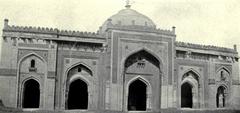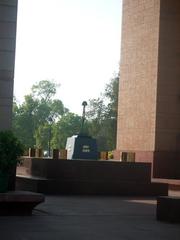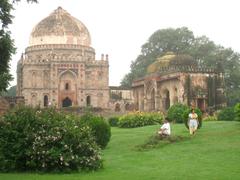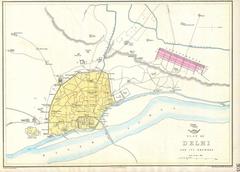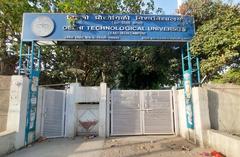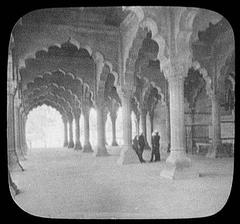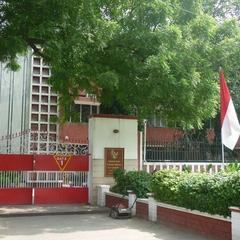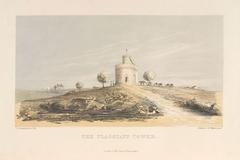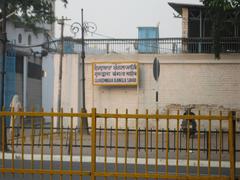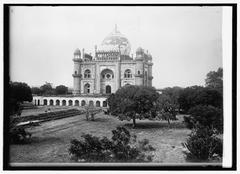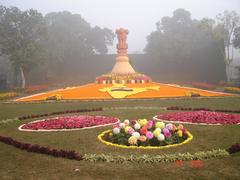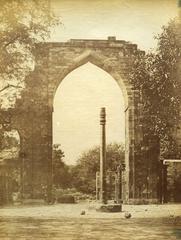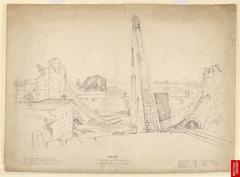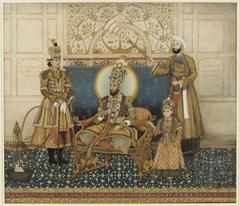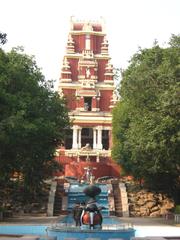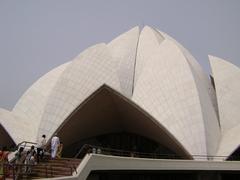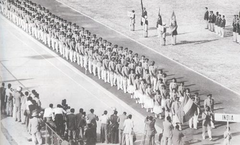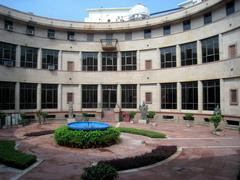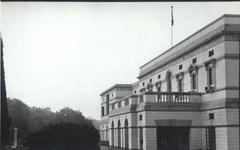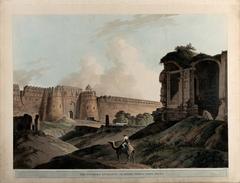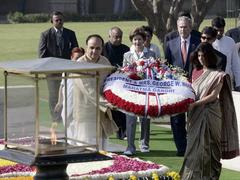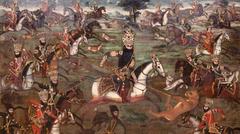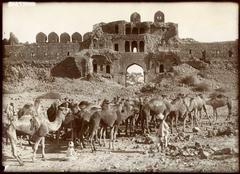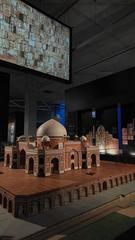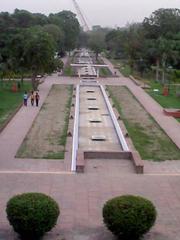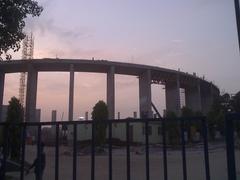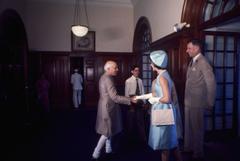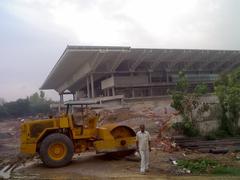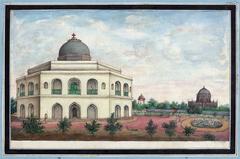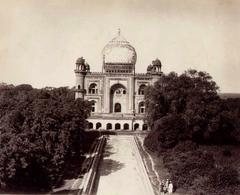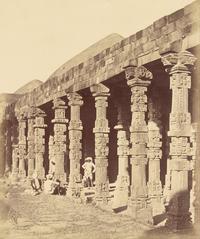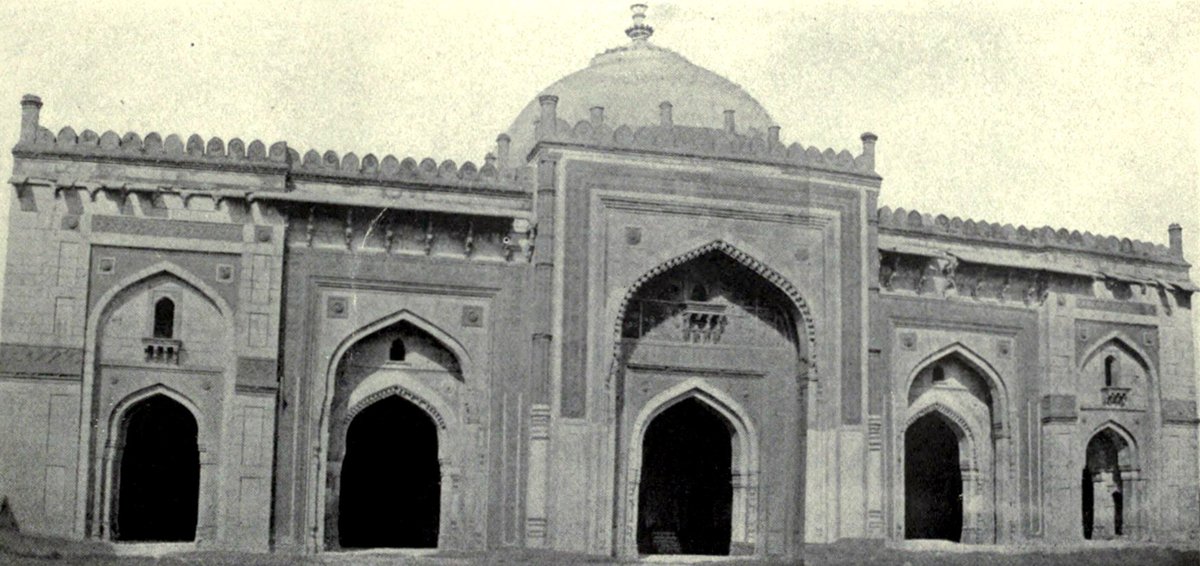
Qila-i-Kuhna Mosque: Visiting Hours, Tickets, and Historical Significance in New Delhi
Date: 14/06/2025
Introduction: Discovering Qila-i-Kuhna Mosque
Set within the storied walls of Purana Qila (Old Fort) in New Delhi, the Qila-i-Kuhna Mosque is a striking testament to the evolution of Indo-Islamic architecture and the shifting political landscapes of 16th-century India. Commissioned in 1541 CE by Sher Shah Suri, the founder of the Sur Empire, this mosque was designed as a congregational space for the Sultan and his court. Its construction marked a pivotal moment, bridging late Sultanate styles and emerging Mughal aesthetics, and its enduring presence offers deep insight into Delhi’s rich, layered history. With a blend of Persian, Afghan, and indigenous design motifs—evident in its five-arched façade, elegant dome, and intricate inlay work—the mosque is both a spiritual symbol and an architectural marvel (so.city), (Wikipedia), (The Delhi Tours), (Everything Explained Today).
Today, the mosque attracts travelers, history enthusiasts, and architecture lovers alike. This guide provides comprehensive information on its history, architectural features, visitor details, guided tours, nearby attractions, and practical tips to enrich your visit.
Table of Contents
- Origins and Construction
- Architectural Features
- Historical Context
- Cultural and Religious Significance
- Visiting Qila-i-Kuhna Mosque: Hours, Tickets & Tips
- Restoration and Preservation
- Qila-i-Kuhna Mosque within Purana Qila
- Frequently Asked Questions (FAQ)
- Legacy and Modern-Day Relevance
- Comparative Significance
- Nearby Attractions
- Travel Tips
- Visuals and Interactive Media
- References
Origins and Construction
The Qila-i-Kuhna Mosque was built in 1541 CE by Sher Shah Suri inside the Purana Qila complex. Intended as a royal congregational mosque, its name—meaning “Mosque of the Old Fort”—reflects its location at the heart of one of Delhi’s most ancient sites. Sher Shah, an Afghan ruler who ousted Mughal emperor Humayun, initiated the fort and mosque to symbolize his rule and the Sur dynasty’s legitimacy. While Sher Shah began construction, his successor Islam Shah and later Humayun made further modifications, but the mosque itself remains a well-preserved relic of the Sur era (so.city), (delhicapital.com).
Architectural Features
The mosque’s design is a striking synthesis of Persian, Afghan, and Indian architectural elements. Its façade is dominated by five pointed arches—the central arch being the tallest and most ornate—with each arch framed by pilasters and recessed panels. Above the central bay rises a prominent dome, supported by squinches and surrounded by chhatris (domed kiosks), reflecting a fusion of Islamic and Rajputana influences (explorewithecokats.com). Octagonal turrets at the rear corners accentuate the mosque’s silhouette.
Inside, the mosque features five bays and five richly decorated mihrabs (prayer niches), with elaborate marble and colored stone inlay, geometric patterns, calligraphy, and floral motifs such as lotuses and kalash engravings. The floors and walls are adorned with colored stones, and the use of red sandstone and white marble creates a visually stunning contrast. The mosque is oriented towards Mecca, with its main prayer hall facing west (Wikipedia), (The Delhi Tours).
Historical Context
The mosque was constructed during a period of intense rivalry between the Sur and Mughal dynasties. Sher Shah Suri’s defeat of Humayun led to the establishment of the Sur Empire and a wave of new architectural projects meant to legitimize his rule. After Sher Shah’s death, Humayun reclaimed Delhi, but the mosque remained a lasting legacy of the Sur dynasty, serving as a symbol of both religious devotion and royal authority (delhicapital.com), (World History Edu).
Cultural and Religious Significance
The Qila-i-Kuhna Mosque was conceived as a Jami Masjid for both royal and public worship. While it is no longer used for regular prayers, its sacredness is preserved through visitor etiquette such as footwear removal. The mosque also historically featured an ablution tank (wazoo khaana), now dry, underscoring its original role as a center for communal religious life (so.city).
Visiting Qila-i-Kuhna Mosque: Hours, Tickets & Tips
Visiting Hours
- Daily: 7:00 AM – 6:00 PM (some sources note 9:30 AM – 5:00 PM; confirm timings before your visit).
Tickets
- Indian nationals: ₹30–₹50
- Foreign nationals: ₹250–₹500
- Children under 15: Free
- Discounts: Online booking provides up to 10% off; discounts available for students and senior citizens with valid ID.
Accessibility and Facilities
- Wheelchair Access: Ramps and accessible pathways are provided, but some upper terraces are not wheelchair accessible.
- Amenities: Restrooms, drinking water, and locker services are available near the main entrance.
- Parking: Complimentary parking is available at the fort.
How to Reach
- Metro: Nearest stations are Pragati Maidan and Supreme Court (Blue Line), about 2 km from Purana Qila.
- Bus: Multiple city buses connect to the area.
- App-based cabs: Ola, Uber, and Jugnoo are convenient options.
Guided Tours and Photography
- Guides: Licensed guides and audio guides are available at the entrance.
- Photography: Allowed for free; videography with camcorder incurs a small fee. Early morning or late afternoon provides the best lighting.
Restoration and Preservation
The mosque’s resilience is attributed to traditional construction techniques, including the use of lime mortar mixed with rice paste, jaggery, and black lentils. The Archaeological Survey of India actively conserves the site, focusing on the preservation of stonework, calligraphy, and overall structural integrity (explorewithecokats.com), (Audiala).
Qila-i-Kuhna Mosque within Purana Qila
Purana Qila’s roots extend to the pre-Mauryan era, and the site is speculated to be the location of the ancient city of Indraprastha. Over centuries, it has served as a royal residence, military fortress, battleground, and refugee camp. The Qila-i-Kuhna Mosque, situated near the fort’s main gates and surrounded by other historic structures, stands at the intersection of Delhi’s medieval and modern histories (delhicapital.com), (explorewithecokats.com).
Frequently Asked Questions (FAQ)
Q: What are the Qila-i-Kuhna Mosque visiting hours?
A: Generally, 7:00 AM to 6:00 PM daily. Confirm timings before your visit.
Q: Are tickets required?
A: Yes. Entry to Purana Qila includes access to the mosque; tickets are available on-site and online.
Q: Is photography allowed?
A: Yes, with restrictions on flash and video. Camcorder use requires a small fee.
Q: Is the mosque wheelchair accessible?
A: Main areas are accessible, but some upper levels and turrets are not.
Q: Are prayers held at the mosque?
A: No regular prayers are conducted; it functions as a heritage site.
Legacy and Modern-Day Relevance
The Qila-i-Kuhna Mosque stands as a rich symbol of Delhi’s complex past—embodying artistry, spirituality, and dynastic ambition. Its transitional architecture influenced later Mughal monuments and remains a vital stop for anyone interested in the city’s history. The mosque’s preservation and accessibility testify to efforts to honor Delhi’s pluralistic heritage (Audiala), (so.city), (Wikipedia).
Comparative Significance
Preceding the grand Mughal mosques like Jama Masjid, Qila-i-Kuhna is a key example of architectural transition, blending Sultanate and early Mughal styles. Its innovative features—such as the five-bay layout, dome and squinches, and fusion of Indian and Islamic motifs—would profoundly influence subsequent mosque design in North India (The Delhi Tours).
Nearby Attractions
- Purana Qila Archaeological Museum: Artifacts from the Sultanate and Mughal eras.
- Sher Mandal: Historic tower used by Humayun.
- Humayun’s Tomb: UNESCO World Heritage Site, ~4 km away.
- Delhi Zoo and India Gate: Close by for a full day of exploration.
Travel Tips
- Best Time to Visit: October–March for milder weather.
- Arrive Early: Morning and late afternoon provide optimal light and fewer crowds.
- Dress Modestly: Respect the mosque’s heritage by covering shoulders and knees.
- Footwear: Remove shoes before entering the prayer hall.
- Guides: Hiring a guide enriches your understanding of the site.
Visuals and Interactive Media
- High-resolution images of the façade, mihrabs, and dome, with alt tags like “Qila-i-Kuhna Mosque red sandstone façade” and “Interior calligraphy at Qila-i-Kuhna Mosque”.
- Interactive map of Purana Qila highlighting routes to the mosque and nearby attractions.
- Virtual tour videos are recommended for deeper engagement.
References
- Qila-i-Kuhna Mosque, so.city
- Purana Qila Blog, The Delhi Tours
- Qila-i-Kuhna Mosque, Wikipedia
- Qila-i-Kuhna Mosque, Everything Explained Today
- Visitor Experience, Audiala
Experience the timeless allure of Qila-i-Kuhna Mosque—where history, architecture, and spiritual heritage converge. For guided tours and up-to-date visitor information, download the Audiala app and explore Delhi’s remarkable historical sites.
